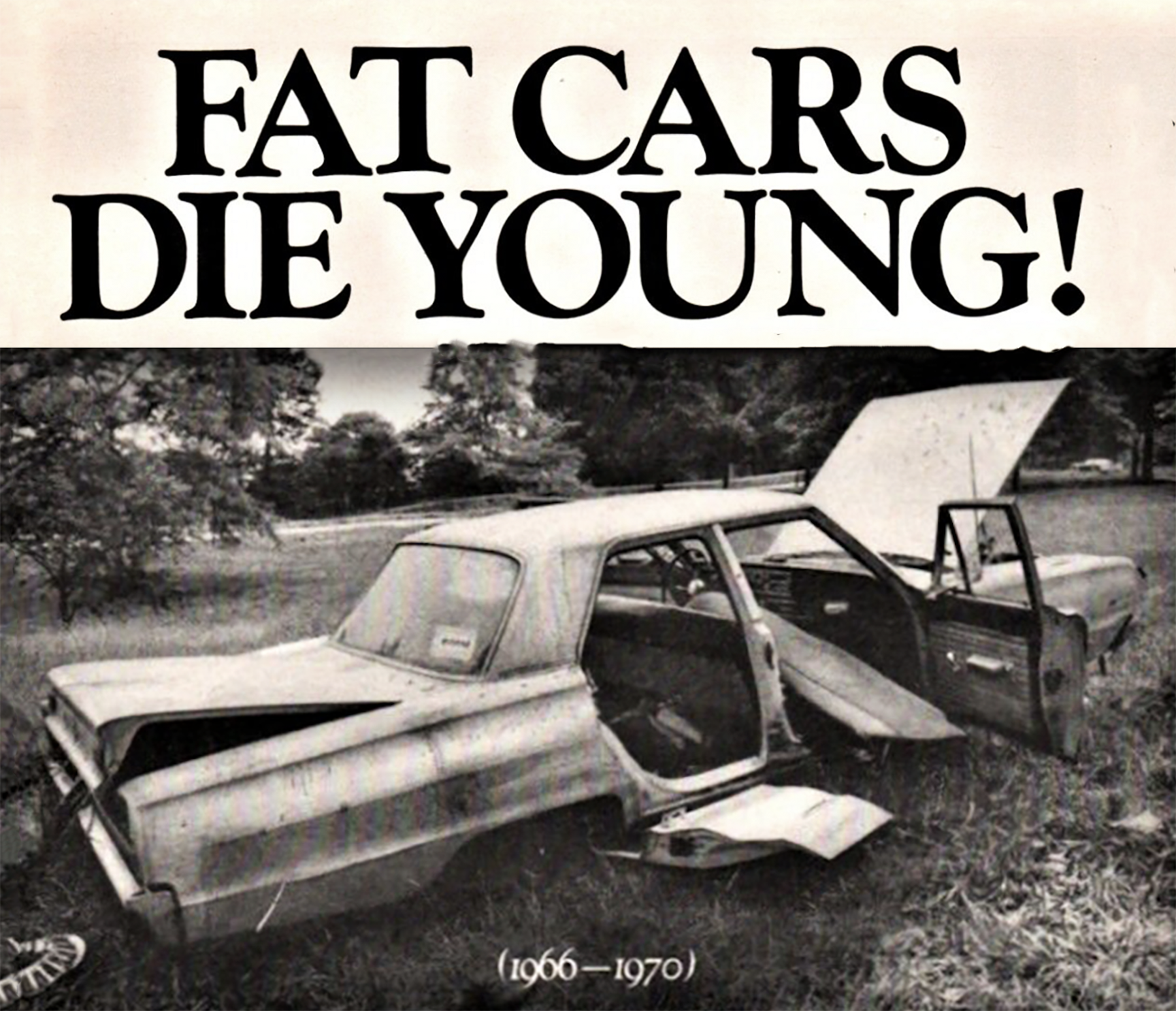
We’re talking about 350 pounds here. That’s the difference in weight between a new 1966 Volvo and a same-year Dodge Coronet—the latter depicted here as having “died young.” The text in this ad is interesting, and makes a good case that American cars of the era were simply larger and heavier than consumers really needed them to be.
By the time this ad ran (1970-1971) the weight difference between American midsize cars and the basic Volvo had grown. A base 1970 Volvo tipped the scales—literally—at approximately 2600 pounds, while a same-year Coronet sedan came in a quarter ton heavier, at around 3100 pounds.
So, do lighter cars really last longer? Maybe not—at least not by simply being lighter—but the 140 Series Volvo depicted here, which was built globally between 1966 and 1974, had earned an iron-clad reputation for reliability and longevity. And, as documented here, they were pretty light, all things considered.
Of course, Volvos of the era were generally not equipped with air conditioning, automatic transmissions, or heavy 6-cylinder or V8 engines. All things that would have added to the car’s mass.
Having spent some time behind the wheel of a girlfriend’s Volvo from this time period, I can attest to the car’s exemplary stoutness and build quality. I can also report that her car was slow and noisy, but the front seats were fantastic. Also, 140 Series Volvos handled so much better than contemporary American midsize fare that a comparison is almost silly. The handling was, at least in part, a function of the Volvo’s lean posture.
As for the claims in this ad, they are mostly no longer valid. Volvo’s largest current crossover, the excellent XC90, now clocks in at around 4800 pounds. That’s about the base curb weight of the largest Dodge crossover, the Durango. Which vehicle is destined to die younger? Who’s to say, but both could benefit from a diet.
Listen to the Consumer Guide Car Stuff Podcast
1970 Volvo Gallery
(Click below for enlarged images)
